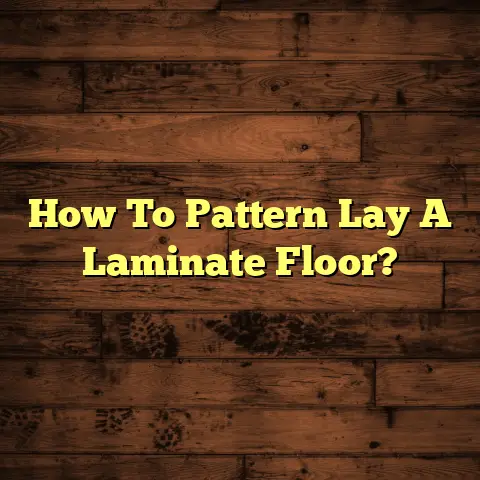How To Create a Floor Bed? (5 Room Flops!)
“I never imagined that sleeping on the floor could be so liberating, but it was also a journey filled with unexpected challenges!”
That’s what Sarah told me when I was helping her prep her spare bedroom for a floor bed setup. And honestly, it’s a sentiment I’ve heard echoed countless times over my years as a flooring contractor.
Floor beds are becoming increasingly popular, and for good reason. But diving headfirst without understanding the nuances? That’s a recipe for a literal pain in the back.
Let’s dive in, shall we?
1. Understanding Floor Beds
So, what exactly is a floor bed?
Simply put, it’s a mattress placed directly on the floor, eschewing the traditional bed frame. It’s a concept rooted in minimalism, space-saving solutions, and, surprisingly, comfort.
The Rise of the Floor Bed
I’ve noticed a definite uptick in inquiries about preparing floors for floor beds. It’s not just a fad; it’s a lifestyle choice for many. Think about it: smaller living spaces, a desire for less clutter, and a growing appreciation for simplicity all contribute.
Benefits Beyond Aesthetics
The benefits go beyond just aesthetics. From a practical standpoint, floor beds are:
- Space-Saving: No bulky bed frame means more room to breathe (and dance!).
- Minimalist: Embraces the “less is more” philosophy, decluttering your life, literally.
- Affordable: Skipping the frame saves you some serious cash.
-
Potentially Better for Your Back: Some people find firmer support more beneficial.
Important Note: This isn’t a universal truth. Individual needs vary drastically.
A Nod to History
Floor sleeping isn’t new. In many cultures, it’s been the norm for centuries. Think Japanese futons, traditional Korean bedding, and even historical practices in various regions.
These cultures often prioritize functionality and a closer connection to the earth. It’s fascinating how these ancient practices are finding new life in modern homes.
2. Preparing for the Transition
Alright, so you’re intrigued. But before you toss your box spring to the curb, let’s talk preparation. This isn’t just about throwing a mattress on the floor and calling it a day.
Mindset Matters
The biggest hurdle is often the mindset shift. We’re so used to elevated beds that the idea of sleeping on the floor can feel… strange.
You need to embrace the concept, understand the benefits for you, and be prepared to adapt.
It’s about consciously choosing a different lifestyle, not just following a trend.
Essential Tools and Materials
Here’s a checklist of what you’ll need:
- Mattress: This is the big one. We’ll delve into types and sizes later.
- Bedding: Sheets, blankets, pillows – the usual suspects. But consider materials that breathe well, especially if you tend to sleep hot.
- Floor Covering (Optional but Recommended): Rugs, mats, or even a thin layer of padding can make a huge difference in comfort and insulation. I often recommend a natural fiber rug like jute or sisal.
- Cleaning Supplies: Because your mattress will be in direct contact with the floor, regular cleaning is crucial.
- Vacuum Cleaner: For obvious reasons. A good HEPA filter is a plus.
- Dehumidifier (Optional): If you live in a humid climate, this can help prevent mold and mildew growth.
Location, Location, Location
Choosing the right spot for your floor bed is key. Consider these factors:
- Light: Do you want morning sun streaming in, or do you prefer a darker, cozier corner?
- Space: Make sure you have enough room to move around the mattress comfortably. Avoid cramped spaces that feel claustrophobic.
- Accessibility: Can you easily get in and out of bed? This is especially important for people with mobility issues.
- Airflow: Ensure there’s good ventilation to prevent moisture buildup. Avoid placing the bed directly against a wall if possible.
3. Step-by-Step Guide to Creating a Floor Bed
Alright, let’s get down to brass tacks. Here’s a step-by-step guide to creating your perfect floor bed setup.
Step 1: Selecting the Right Mattress
This is arguably the most important decision. The wrong mattress can lead to discomfort, back pain, and a whole host of other problems.
-
Types of Mattresses:
- Memory Foam: Contours to your body, providing excellent pressure relief. Can be hot.
- Latex: Natural and breathable, offers good support and durability. Often more expensive.
- Innerspring: Traditional option with coils for support. Can be less comfortable than foam or latex.
- Futon Mattress: Typically thinner and firmer than traditional mattresses. A popular choice for floor beds.
-
Sizes:
- Twin: Good for solo sleepers in small spaces.
- Full: A bit more room for single sleepers, or cozy for couples.
- Queen: The most popular choice, offering ample space for couples.
- King: Maximum space and comfort, but requires a larger room.
-
Thickness:
- Thin (4-6 inches): Suitable for minimalists or those who prefer a very firm surface.
- Medium (8-10 inches): A good balance of comfort and support.
-
Thick (12+ inches): Provides maximum cushioning and support.
-
Pro Tip: Visit a mattress store and try out different types and thicknesses before making a decision. Don’t be afraid to lie down and really get a feel for it.
Step 2: Preparing the Floor
This is where my expertise as a flooring contractor comes in handy. The floor beneath your mattress needs to be clean, dry, and as comfortable as possible.
- Cleaning: Thoroughly vacuum and mop the floor. Pay special attention to corners and baseboards where dust and dirt tend to accumulate.
-
Padding (Optional but Highly Recommended): Adding a layer of padding between the mattress and the floor can significantly improve comfort and insulation. Consider:
- Area Rug: Provides a soft surface and adds visual appeal.
- Foam Padding: A thin layer of foam can help cushion the mattress and protect the floor.
- Tatami Mats: Traditional Japanese mats made of woven rush grass. They provide a firm, supportive surface and are naturally breathable.
-
Moisture Barrier (If Necessary): If you live in a damp environment or have a concrete floor, consider using a moisture barrier to prevent moisture from seeping into the mattress. A simple plastic sheet will do the trick.
Step 3: Arranging Bedding and Decorative Elements
Now for the fun part! This is where you can really personalize your floor bed setup and make it your own.
- Sheets and Blankets: Choose breathable materials like cotton, linen, or bamboo. Consider the climate and your personal preferences for warmth.
- Pillows: Experiment with different types and sizes of pillows to find what works best for you. A good pillow is essential for proper neck and spine alignment.
- Decorative Elements: Add personal touches like throw pillows, blankets, tapestries, or string lights to create a cozy and inviting space.
- Nightstand Alternative: Since you won’t have a traditional nightstand, consider using a small table, a stack of books, or a wall-mounted shelf to hold your essentials.
Step 4: Addressing Height and Accessibility Concerns
Floor beds are, well, on the floor. This can be a challenge for some people, especially those with mobility issues, the elderly, or young children.
- For Kids: Make sure the mattress isn’t too high off the ground to prevent falls. Consider adding a soft rug or mat around the bed for extra cushioning.
- For Adults: If you have trouble getting up and down from the floor, consider using a thicker mattress or adding a platform to raise the bed slightly.
- For the Elderly: Floor beds may not be the best option for seniors with mobility issues. If you’re determined to try it, consult with your doctor or a physical therapist first.
4. Common Mistakes and Room Flops
Okay, let’s talk about the pitfalls. I’ve seen it all in my line of work, and I want to help you avoid these common mistakes.
Flop #1: Choosing the Wrong Mattress Type
This is the most common mistake I see. People often assume that any mattress will do, but that’s simply not the case.
- Too Soft: A mattress that’s too soft won’t provide enough support, leading to back pain and poor sleep.
-
Too Hard: A mattress that’s too hard can put pressure on your joints and cause discomfort.
- Anecdote: I had a client, let’s call him Tom, who insisted on a rock-hard mattress because he thought it would be good for his back. He ended up with severe hip pain and had to switch to a softer, more supportive mattress.
Flop #2: Poor Placement in the Room
Location matters! A poorly placed floor bed can feel cramped, dark, and uninviting.
- Lack of Natural Light: Placing the bed in a dark corner can make you feel isolated and depressed.
- Cramped Space: If you don’t have enough room to move around the bed comfortably, you’ll feel claustrophobic.
- Drafty Areas: Avoid placing the bed near windows or doors where you might experience drafts.
Flop #3: Inadequate Bedding Options
Bedding is more than just aesthetics; it’s about comfort and functionality.
- Uncomfortable Sheets: Scratchy or non-breathable sheets can make you sweat and toss and turn all night.
- Insufficient Blankets: Not having enough blankets can leave you feeling cold and uncomfortable, especially in the winter.
- Wrong Pillow: Using the wrong pillow can lead to neck pain and headaches.
Flop #4: Neglecting Cleanliness and Hygiene
Because your mattress is in direct contact with the floor, it’s more susceptible to dust, allergens, and moisture.
- Dust and Allergens: Dust mites, pet dander, and other allergens can accumulate in the mattress, triggering allergies and asthma.
-
Moisture Buildup: Moisture from sweat or spills can lead to mold and mildew growth, which can be harmful to your health.
- Industry Fact: According to the EPA, indoor air can be 2 to 5 times more polluted than outdoor air. Regular cleaning is essential to maintain a healthy sleep environment.
Flop #5: Failing to Consider Personal Needs
Everyone is different. What works for one person may not work for another.
- Back Support: If you have back problems, you need a mattress that provides adequate support for your spine.
- Temperature: If you tend to sleep hot, you need breathable bedding and a mattress that doesn’t trap heat.
- Sleeping Position: Side sleepers need a softer mattress that cushions their hips and shoulders, while back sleepers need a firmer mattress that supports their spine.
5. Real-Life Experiences and Testimonials
I’ve gathered some insights from people who’ve successfully transitioned to floor beds, as well as those who’ve learned from their mistakes.
- Maria: “I switched to a floor bed because I wanted to simplify my life. It was an adjustment at first, but now I love it. I feel more grounded and connected to my space.”
- David: “I tried a floor bed to save money, but I didn’t do my research. I bought a cheap, thin mattress and ended up with back pain. I learned my lesson – invest in a good mattress!”
- Emily: “I love my floor bed, but I have to be diligent about cleaning. I vacuum and mop around it every week to prevent dust and allergens from building up.”
These stories highlight the importance of preparation, research, and personalizing your floor bed setup.
6. Conclusion
Creating a floor bed can be a rewarding experience, but it’s important to approach it with careful planning and consideration.
Remember to choose the right mattress, prepare the floor properly, and address any potential challenges.
And most importantly, listen to your body and adjust your setup as needed.
Ultimately, the goal is to create a comfortable, functional, and aesthetically pleasing space that promotes restful sleep and enhances your well-being.





